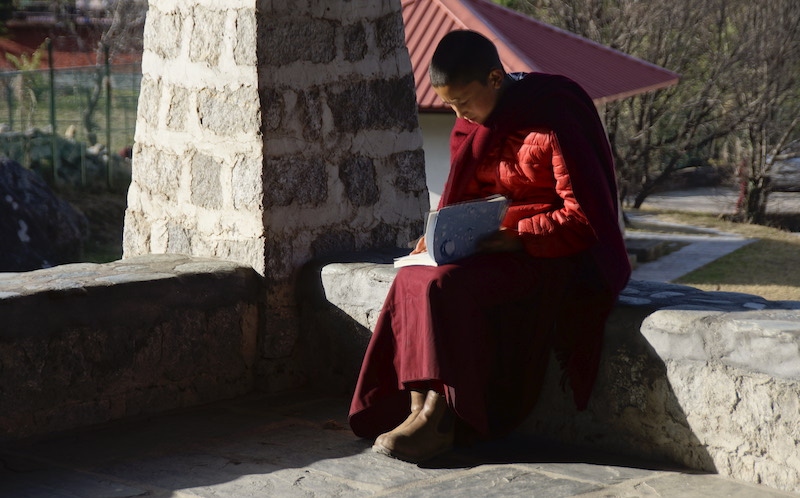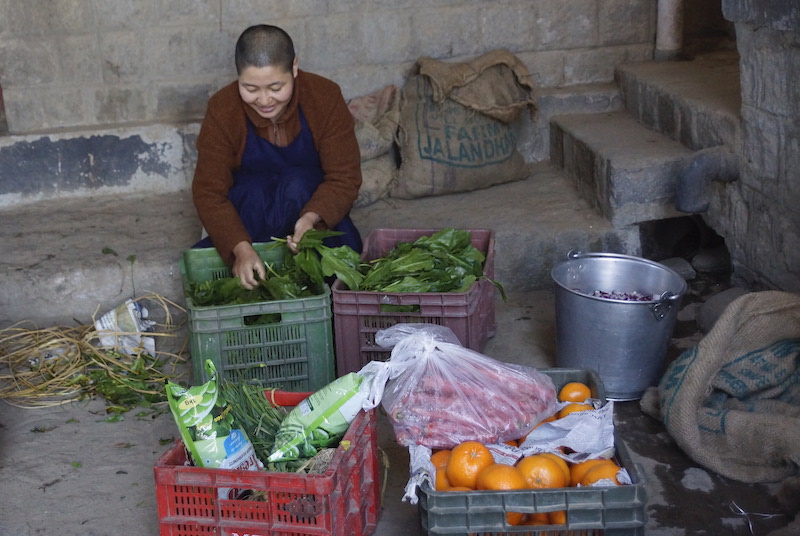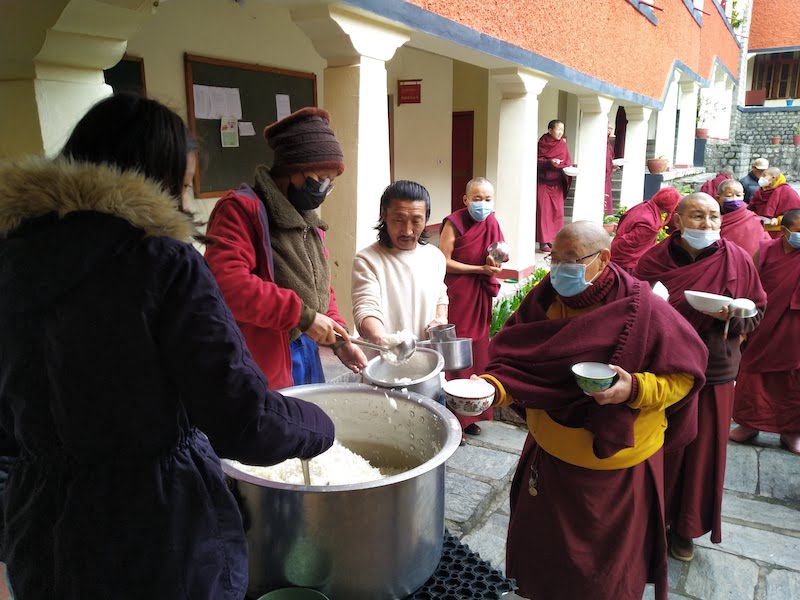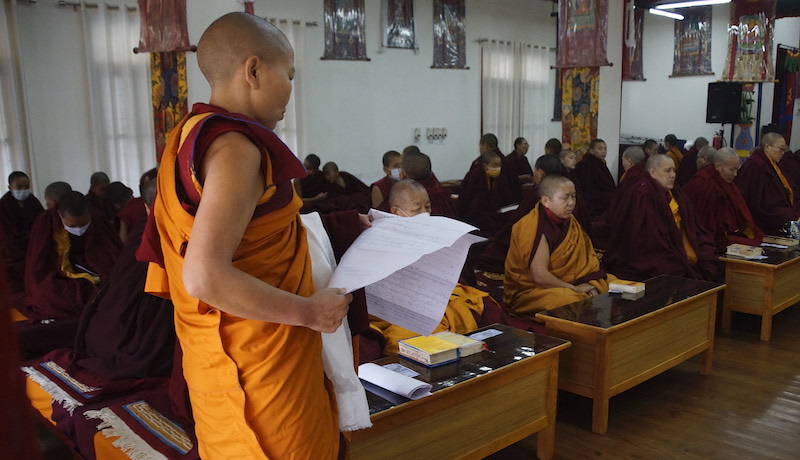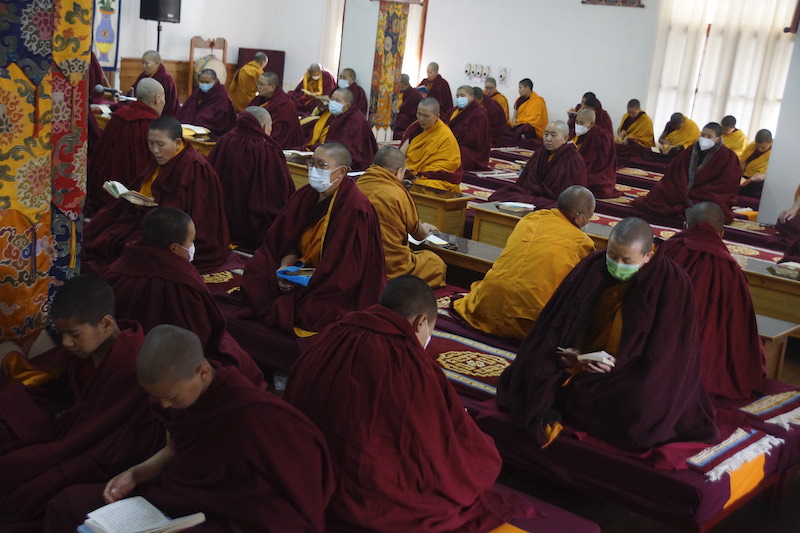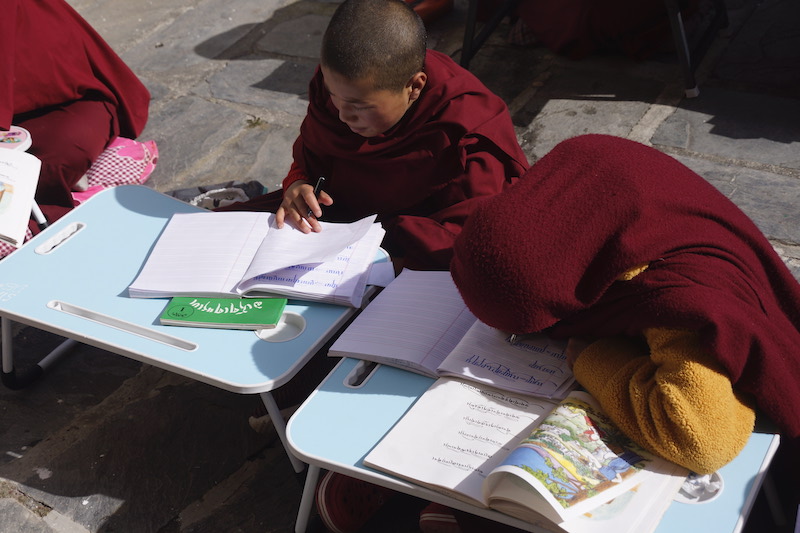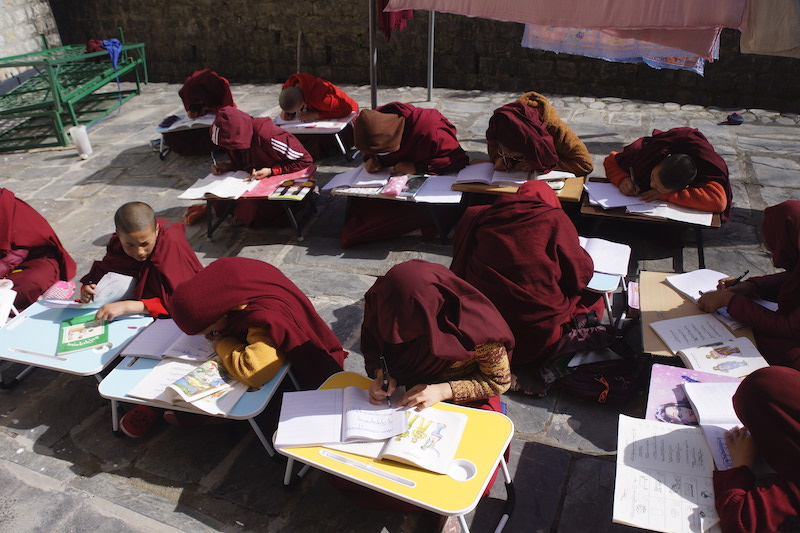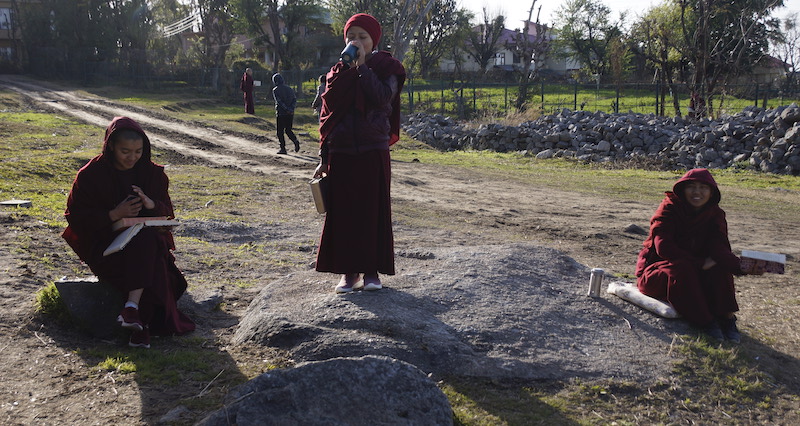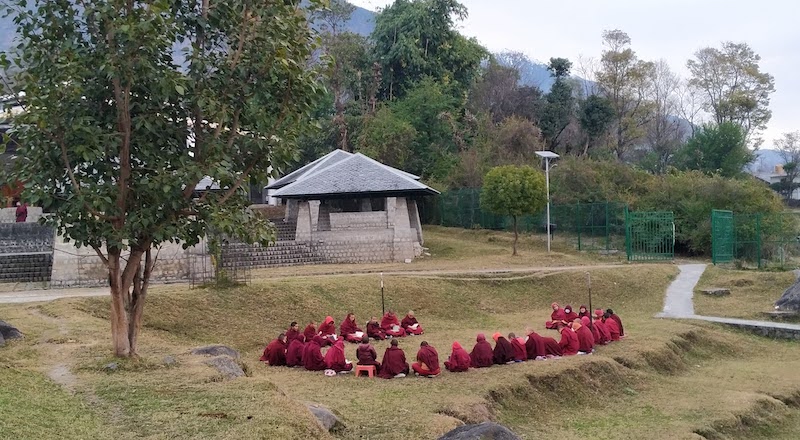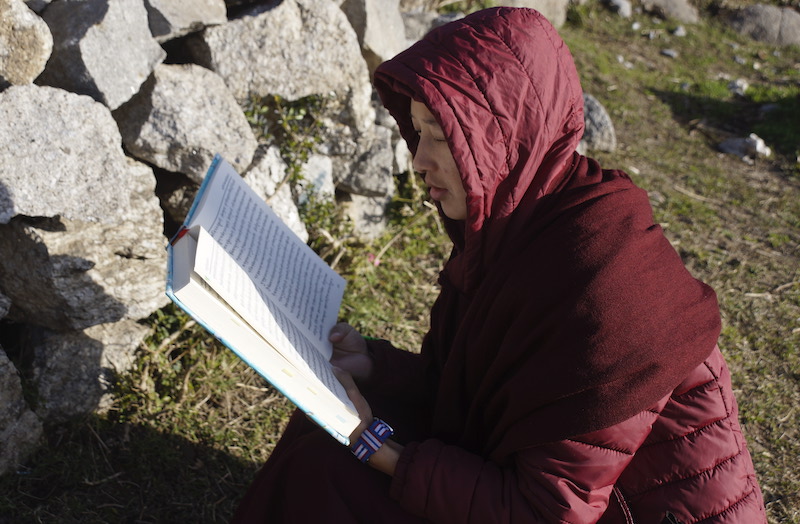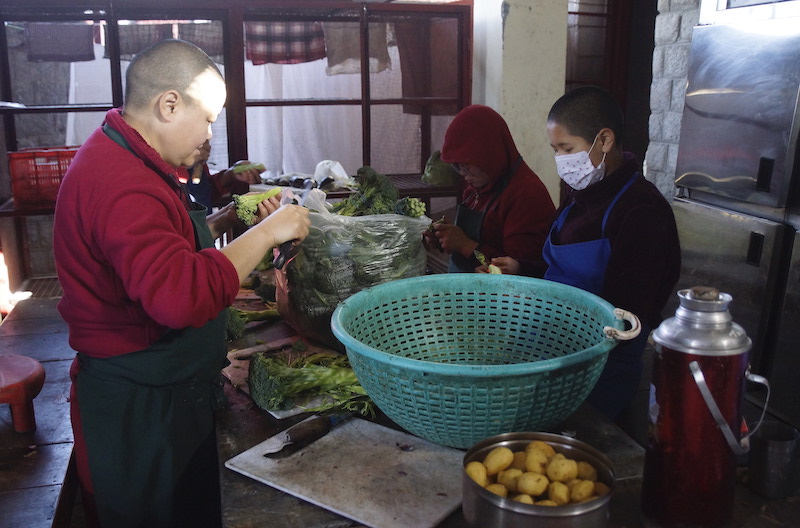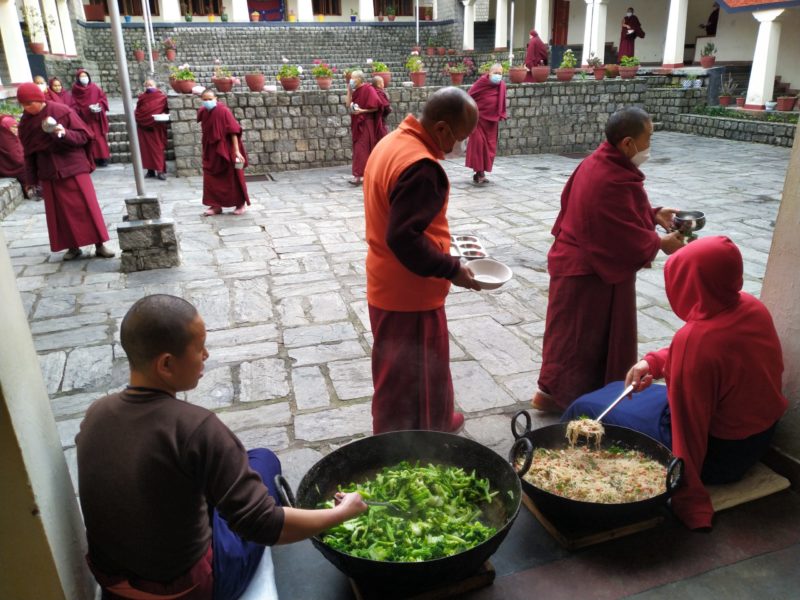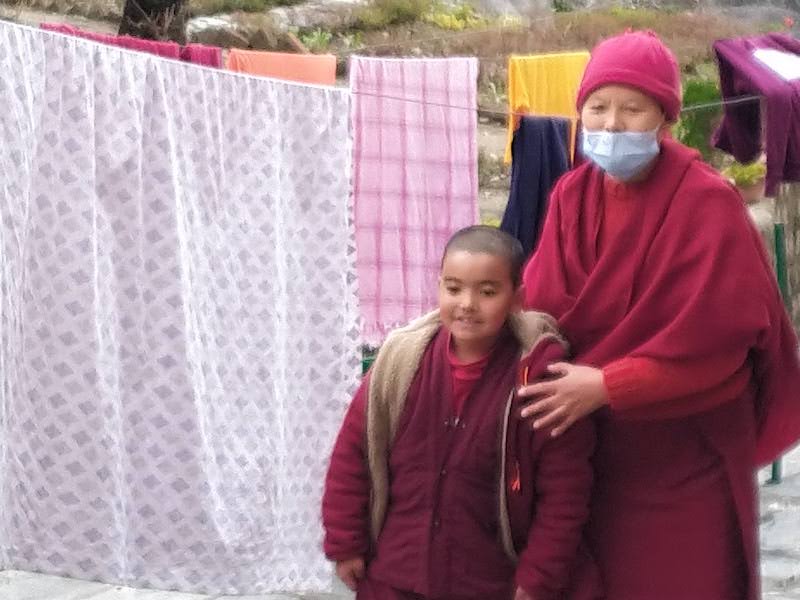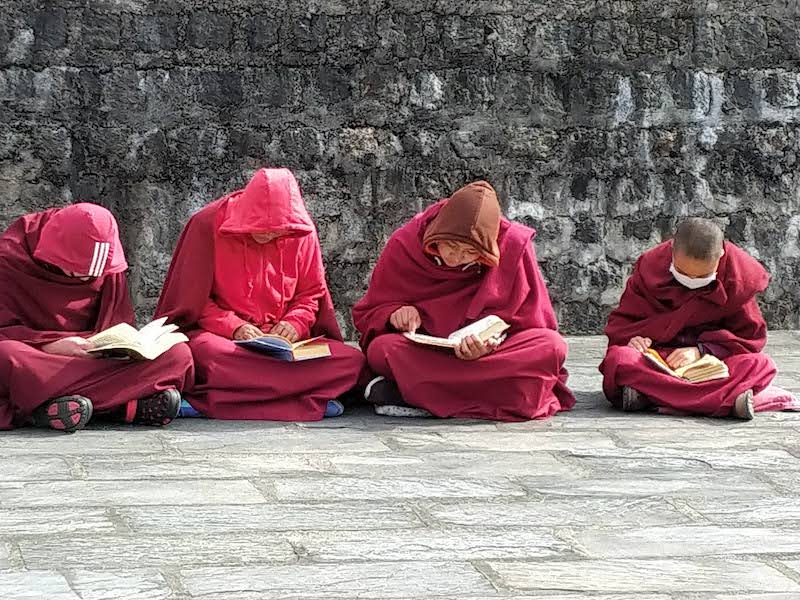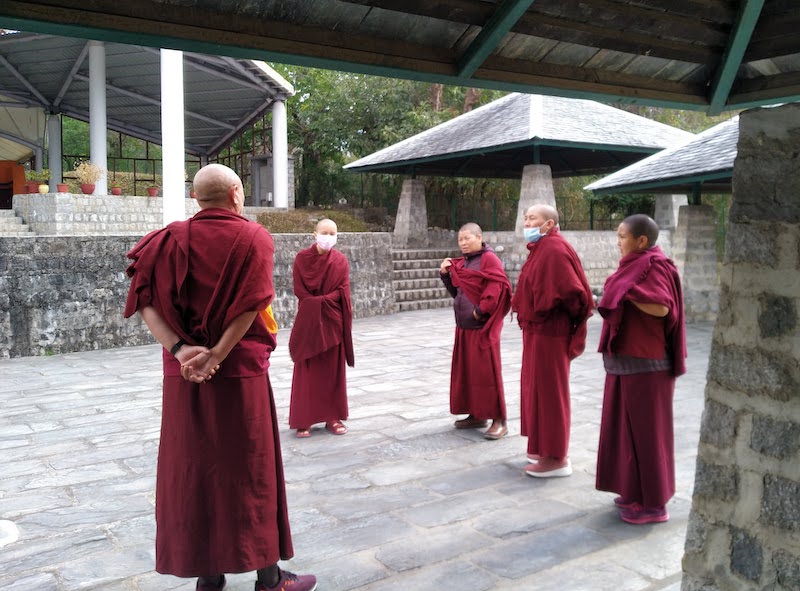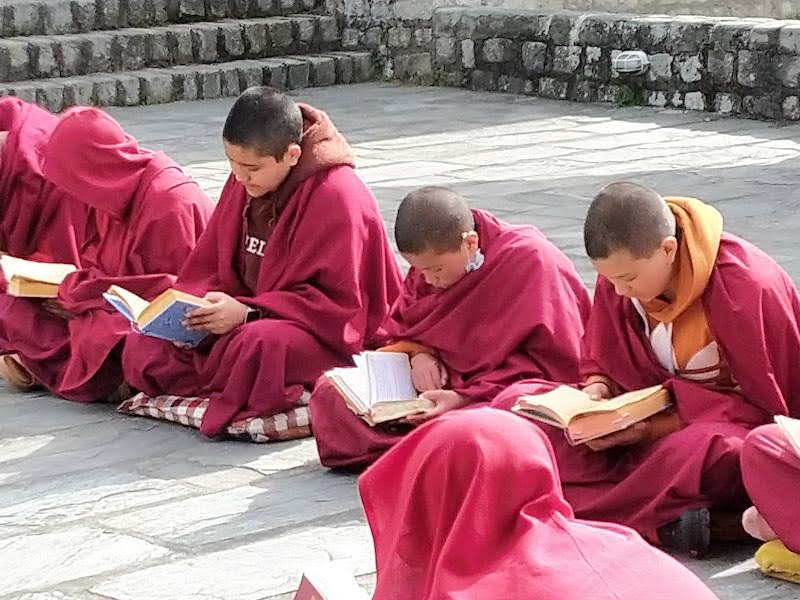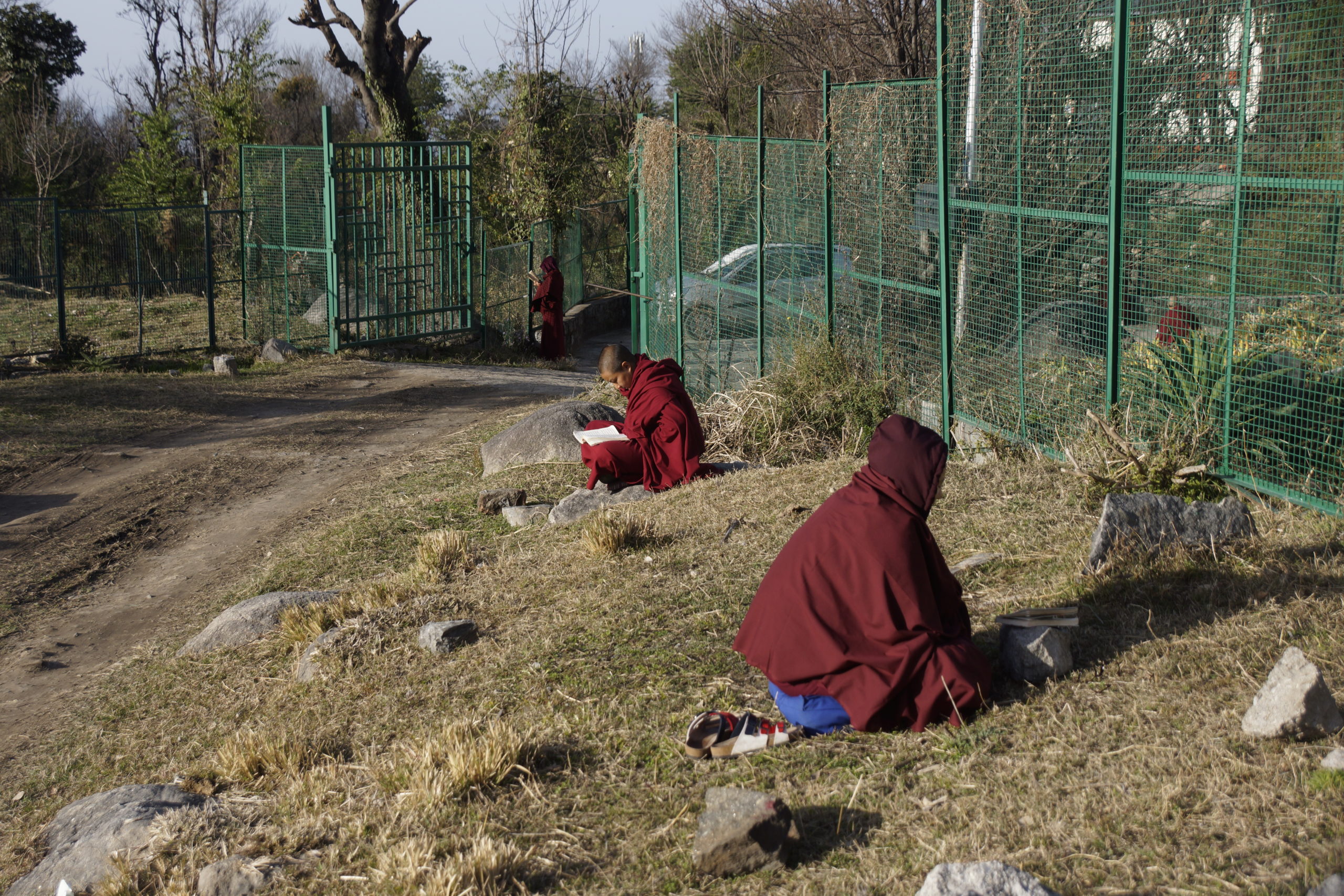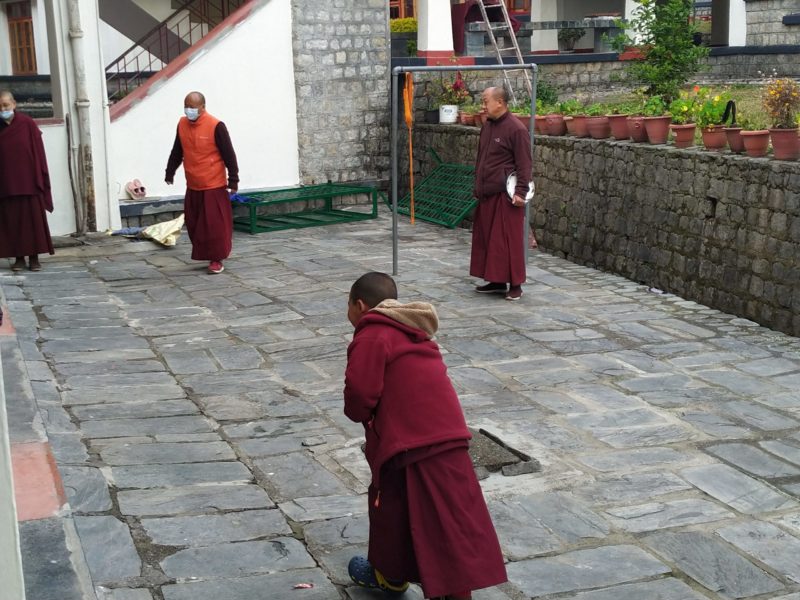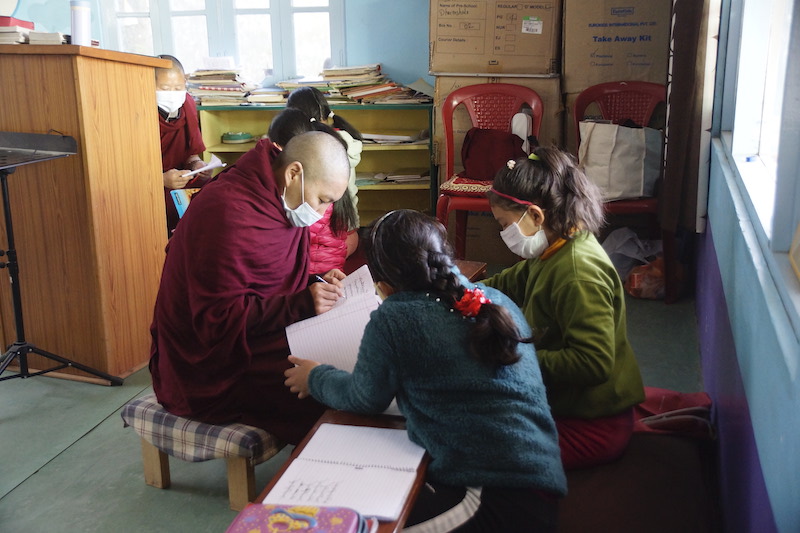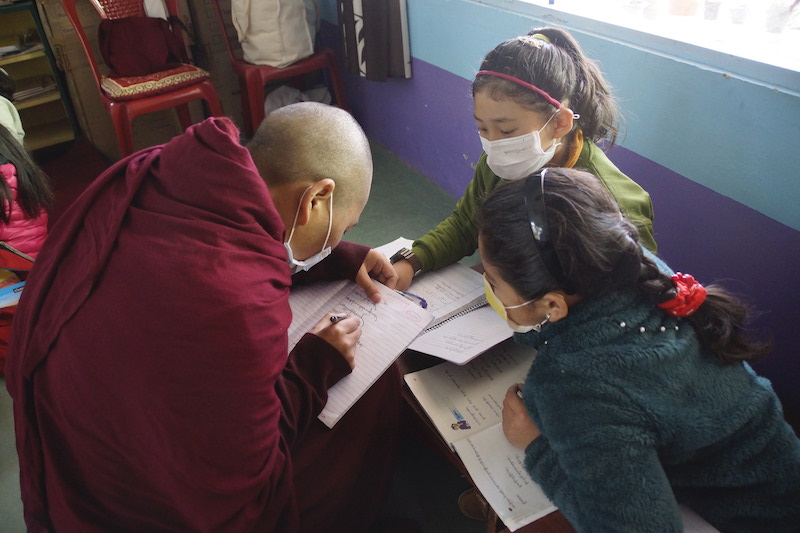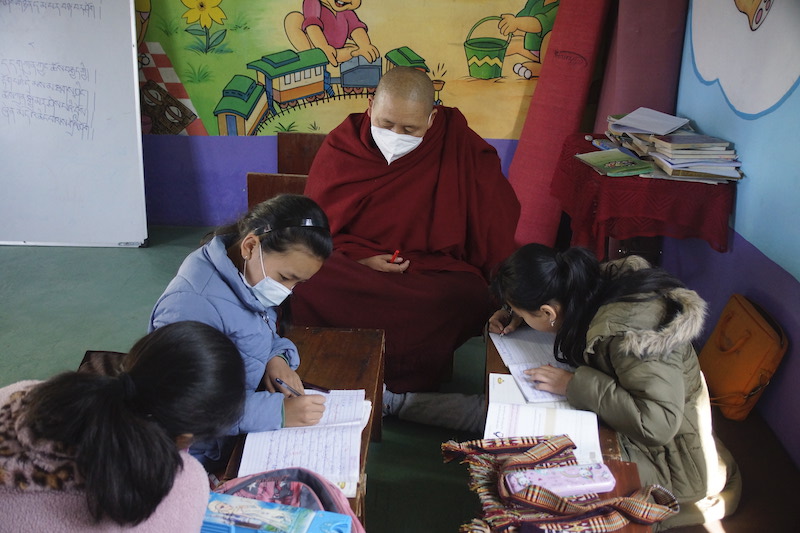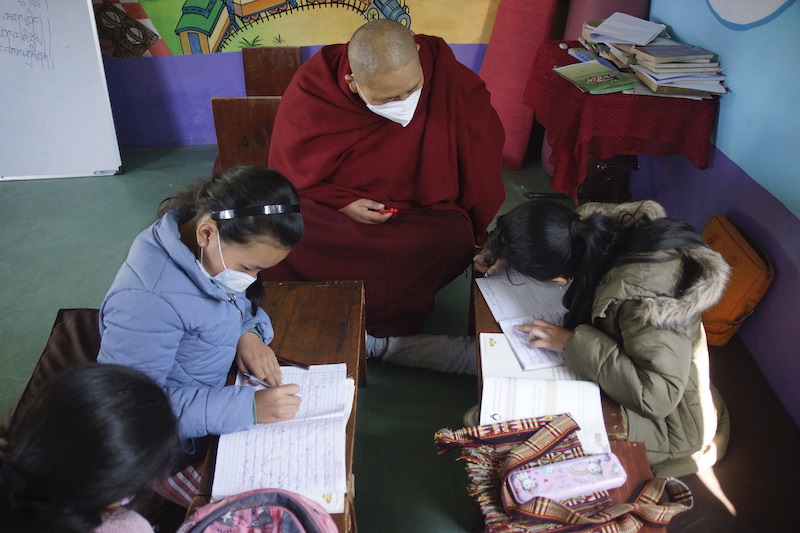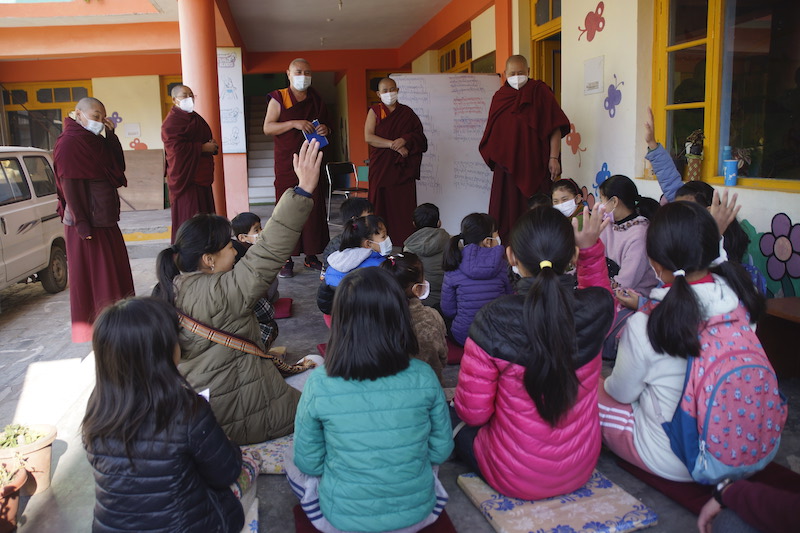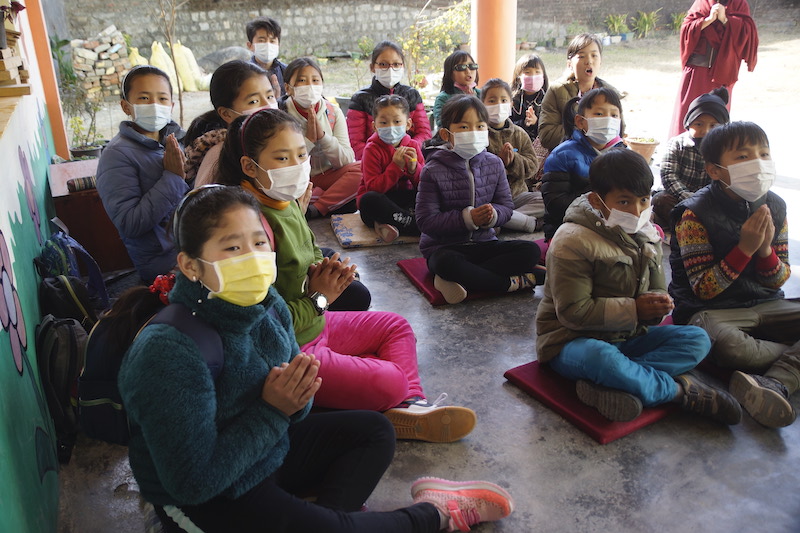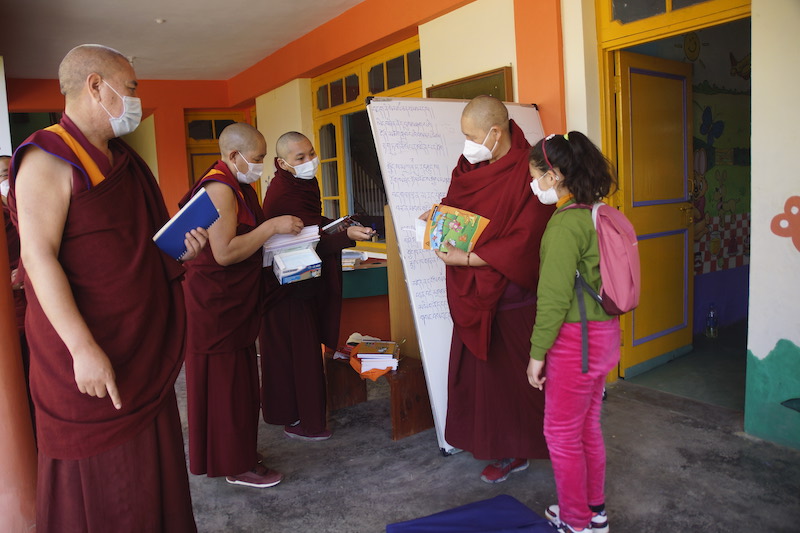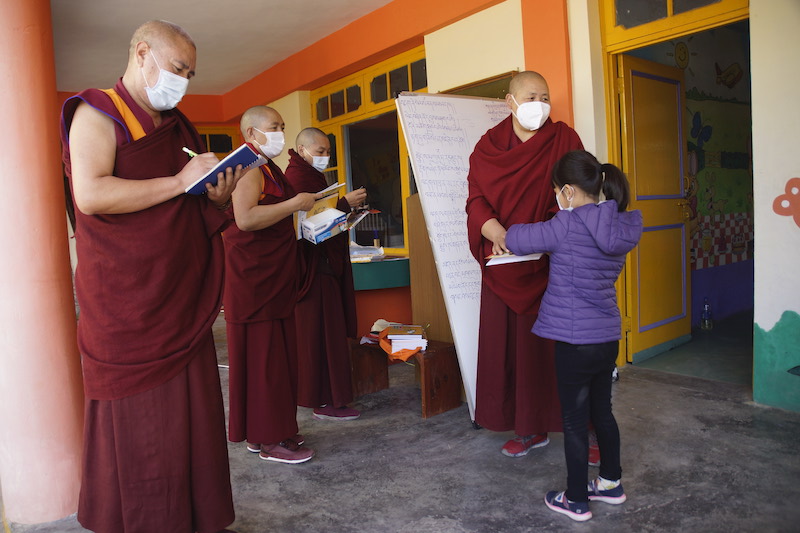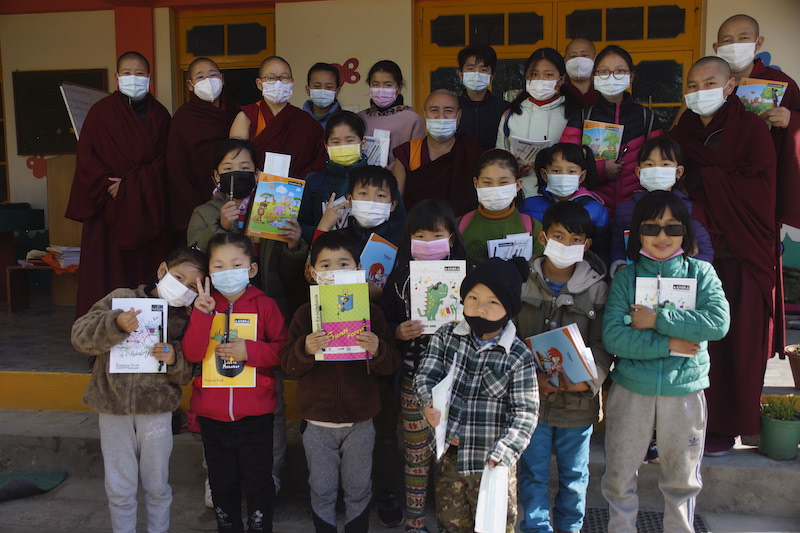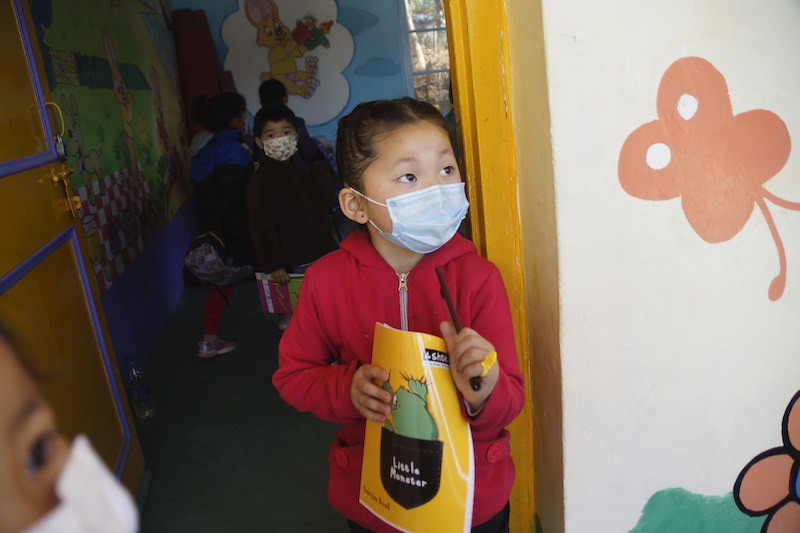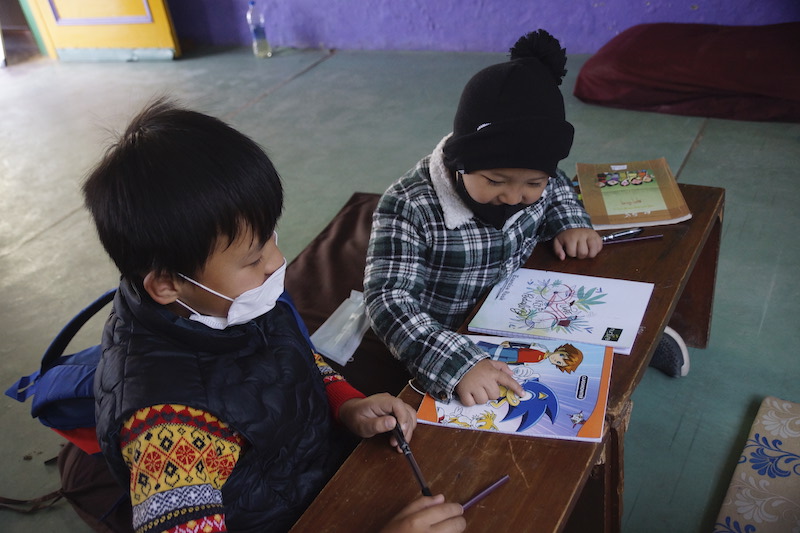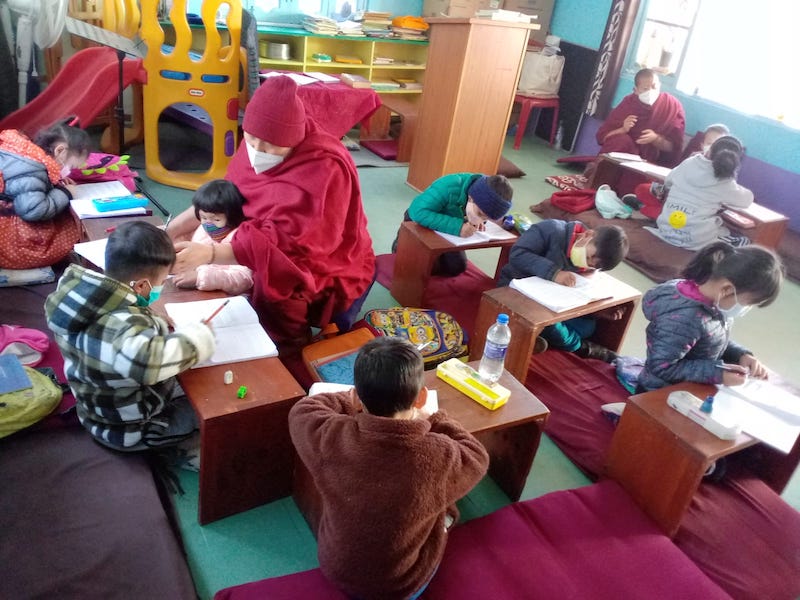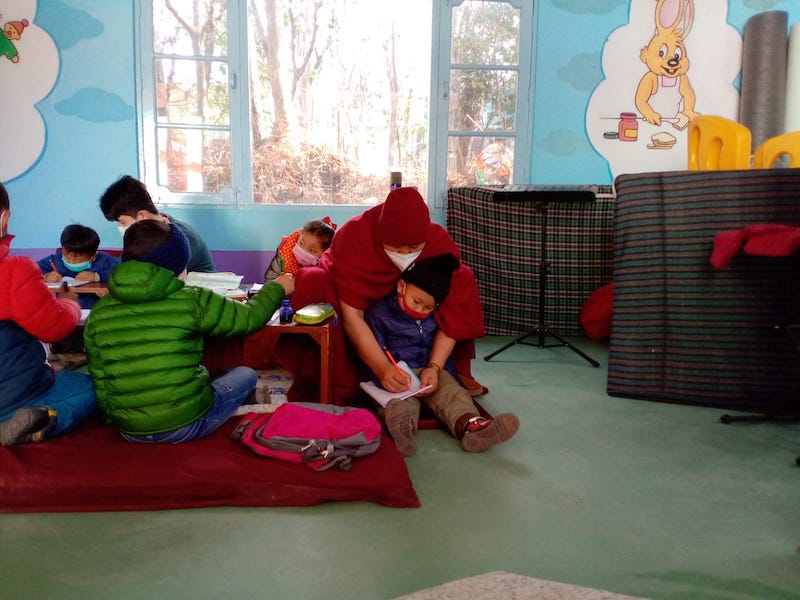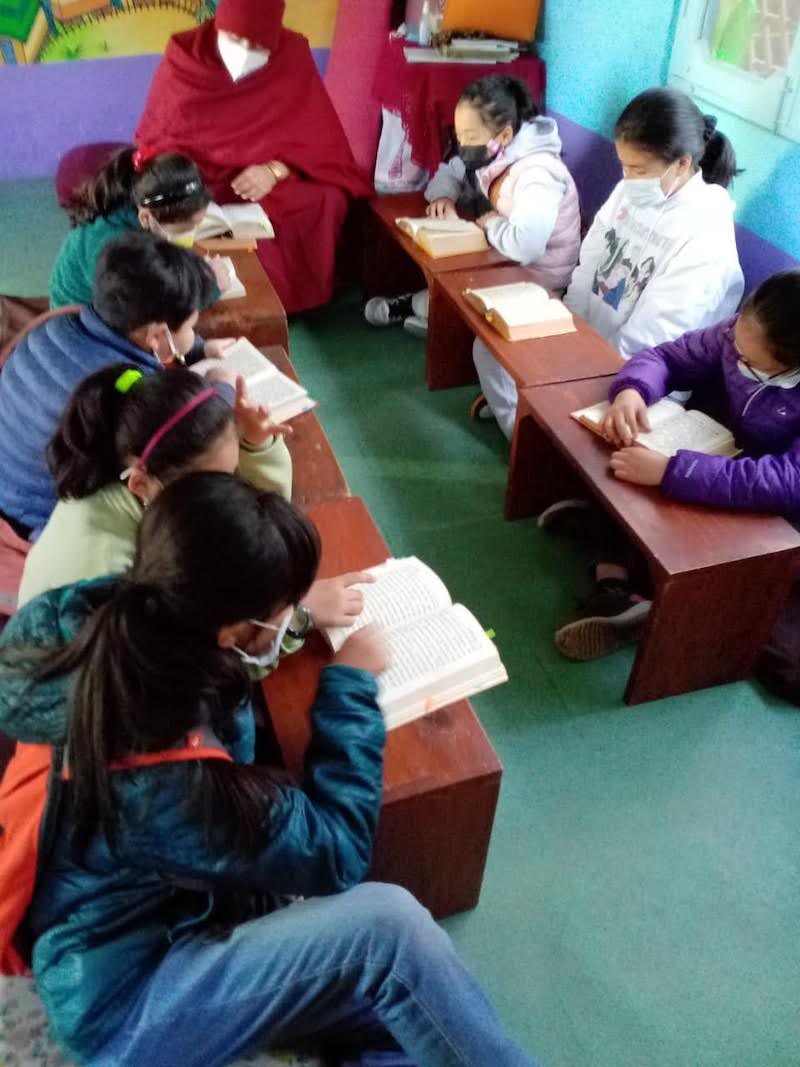The 2023 Geshema examinations began in Dharamsala, India on July 21st with 132 Tibetan Buddhist nuns from seven different educational institutes in India and Nepal taking part.
This year a record number of Tibetan Buddhist nuns are taking the rigorous written and oral examinations – 38 more nuns than last year’s record 94.
The Geshema degree is the highest level of training in the Gelugpa tradition and is equivalent to a PhD in Tibetan Buddhism. It is the same as the Geshe degree for monks but the ending “ma” marks it as referring to a woman.

A nun taking her Geshema exams in 2023. TNP’s Founding Director and Special Advisor Rinchen Khando Choegyal has said, “Educating women is powerful… It’s about enabling the nuns to be teachers in their own right and to take on leadership roles at a critical time in our nation’s history.” Photo by the Dolma Ling Media Nuns.
Until recently, this degree was only open to men; it was only formally opened to women in 2012.
The Geshema degree enables Tibetan Buddhist nuns to become teachers, leaders, and role models. It makes these dedicated women eligible to assume various leadership roles in their monastic and lay communities reserved for degree holders and hence previously not open to women.
The exams take four years to complete, with one set held each year over two weeks. Candidates are examined on the entirety of their 17-year course of study of the Five Great Canonical Texts. They must achieve a score of at least 75 per cent during their studies to be eligible to sit the exams.
Here’s a video by the Dolma Ling Media Nuns of this year’s exams. Can’t see the video? Click here.
The exams began on Chokhor Düchen, one of the holiest days in the Tibetan Buddhist calendar which celebrates the first teaching by Shakyamuni Buddha. On this auspicious day, over 2,500 years ago, the Buddha taught the Four Noble Truths in Sarnath shortly after attaining enlightenment in Bodhgaya. This event is known as the “turning of the wheel of dharma”.
The exams are being hosted this year by Jamyang Choling Institute in Dharamsala. The costs are covered by the Tibetan Nuns Project’s Geshema Endowment Fund. Twenty-one dedicated volunteer nuns are helping with food, shelter, and other tasks relating to holding the exams.

In 2022, 94 nuns sat Geshema exams. This year, a record 132 nuns are taking various levels of the four-year exams. Photo by the Dolma Ling Media Nuns.
The candidates in 2023 come from these 7 Tibetan Buddhist nuns’ educational institutes:
1. Geden Choeling Nunnery (Dharamsala, Himachal Pradesh, India)
2. Dolma Ling Nunnery and Institute (near Dharamsala, Himachal Pradesh, India)
3. Jangchub Choeling Nunnery (Mundgod, Karnataka, India)
4. Kopan Nunnery or Khachoe Ghakyil Ling Nunnery (Nepal)
5. Keydong Thukche Choeling (Kathmandu, Nepal)
6. Jangsemling Nunnery (Kinnaur, Himachal Pradesh, India)
7. Jamyang Choling Institute (Dharamsala, Himachal Pradesh, India)
Here is a second video made by the Dolma Ling Media Nuns.
The main organizers are the Board of Geshema Degree Examination Committee which is made up of three dedicated executive officers and two helpers. The Geshema exams are under the auspices of the Department of Religion and Culture of the Central Tibetan Administration and the Tibetan Nuns Project in Dharamsala.

Nuns debating as part of their Geshema exams. Four senior Geshe Lharampa from the great Tibetan Buddhist learning centers in South India are the examiners for the nuns’ oral debate examinations. Photo by the Dolma Ling Media Nuns.
The Geshema exams are rigorous and take four years to complete, with one set of exams each year. Here is the breakdown of this year’s 132 examination participants:
1st-year exams: 51
2nd year: 55
3rd year: 17
4th and final year: 9

At the start of 2023, 53 women now hold this highest degree. This year, 9 nuns are taking their final year of exams and, if successful, will graduate in November. Photo by the Dolma Ling Media Nuns.
The Number of Geshema Graduates
In 2022, ten nuns graduated with their Geshema degrees bringing the total number of Geshemas in the world to 53.

His Holiness the Dalai Lama with the 20 Geshema graduates at the degree ceremony in Mundgod in 2016. Photo courtesy of OHHDL.
Here’s a list of the Geshema graduations so far since the formal approval in 2012:
- 2016: 20 nuns became Geshemas
- 2017: 6 nuns graduated as Geshemas
- 2018: 10 nuns became Geshemas
- 2019: 7 nuns graduated at the end of November
- 2020: exams cancelled due to the pandemic
- 2021: exams cancelled due to the pandemic
- 2022: 10 nuns graduated as Geshemas in Bodh Gaya
We are extremely grateful to the 159 donors to the Geshema Endowment, including the Pema Chodron Foundation, the Pierre and Pamela Omidyar Fund of the Silicon Valley Community Foundation, the Frederick Family Foundation, and the Donaldson Charitable Trust. We are also very grateful to all those who sponsor nuns and help them on their path. More sponsors are always needed. You can learn more about sponsoring a nun here.




































